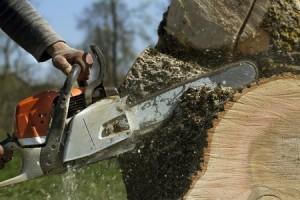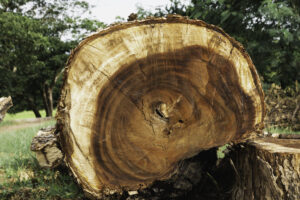
Trees are one of the greatest assets of a property. They provide shade, increase land value and help with drainage. Trees are a valuable investment, but one that can be susceptible to a variety of natural problems. From disease to weather, there are a large number of factors that can be devastating to a tree, and keeping an eye on these problems can prevent that tree from becoming a hazard to your home.

Arborists recommend checking your trees at least twice a year as a regular rule, as this provides regular opportunities to examine each tree and establish a baseline look to identify any issues that may arise.
Experts recommend that you keep an eye on the branches of your tree, looking for any signs of dead leaves or stalled growth. This is particularly important with any branches that may extend over or near any structures, as failures of those branches could lead to damage to your roof or property. Watch for any points where the tree splits into a V-shape or where branches may cross over and rub up against one another. These are potential failure points in the tree’s structure, and any changes noticed between inspections may be a sign that it requires intervention.
Keep a keen eye on any trees near any recent construction, as well. The root network of trees can be impacted by activity nearby that may damage the roots through digging or affecting drainage. This can place stress on the tree that may show up as damaged or bark, increased mushroom growth around the base of the tree or an influx of ant colonies, according to HouseLogic.
Storms can cause the most noticeable impact on trees. A high windstorm or thunderstorm damage can cause immediate and clear change in a tree, whether through lighting strikes or a pronounced lean or uprooting. Such damage is generally something a tree cannot recover from and should be addressed immediately to prevent becoming a greater threat to your property or any nearby trees.
For more help deciding whether a tree has a problem, suggestions on how to address any concerns, or to remove hazard trees safely, consult with a professional arborist or tree service professional.









Recent Comments